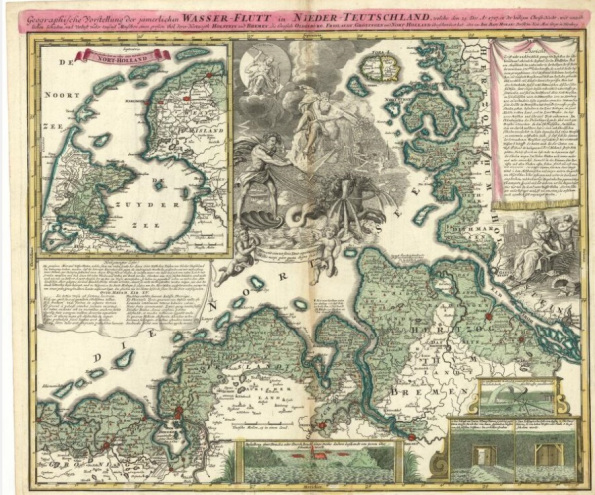Source On 24 December 1717, three hundred years ago today, a northwesterly storm hit the coasts of North Europe. About 14.000 died, over 2.000 of these in the Dutch province of Groningen but only 150 in neighboring Friesland. Why this difference? We do know the answer: Friesland had better coastal defences. Frisian ‘dijken’ were better designed, higher and, especially, better maintained than in Groningen. As Frisian public governance of these public goods was better. In 1716, the Groningen government had been warned, see the extensive report by Thomas van Seeratt, the newly appointed ‘master of coastal defences’, available and transcribed here. After 1717, money became available and the very able and dynamic van Seeratt did a good job to improve the Groningen ‘dijken’. The history of
Topics:
Merijn T. Knibbe considers the following as important: Uncategorized
This could be interesting, too:
tom writes The Ukraine war and Europe’s deepening march of folly
Stavros Mavroudeas writes CfP of Marxist Macroeconomic Modelling workgroup – 18th WAPE Forum, Istanbul August 6-8, 2025
Lars Pålsson Syll writes The pretence-of-knowledge syndrome
Dean Baker writes Crypto and Donald Trump’s strategic baseball card reserve

On 24 December 1717, three hundred years ago today, a northwesterly storm hit the coasts of North Europe. About 14.000 died, over 2.000 of these in the Dutch province of Groningen but only 150 in neighboring Friesland. Why this difference? We do know the answer: Friesland had better coastal defences. Frisian ‘dijken’ were better designed, higher and, especially, better maintained than in Groningen. As Frisian public governance of these public goods was better. In 1716, the Groningen government had been warned, see the extensive report by Thomas van Seeratt, the newly appointed ‘master of coastal defences’, available and transcribed here. After 1717, money became available and the very able and dynamic van Seeratt did a good job to improve the Groningen ‘dijken’. The history of coastal defences is long, simple and somewhat repetitive: ‘After the storm, we improve our public coastal defences’ (why do you think these Frisian ‘dijken’ were better): again and again taxes are increased and monetized, governance is centralized, and designs and maintenance are improved, leading to lasting improvements. I love taxes (plus good government).
Happy Christmas.
